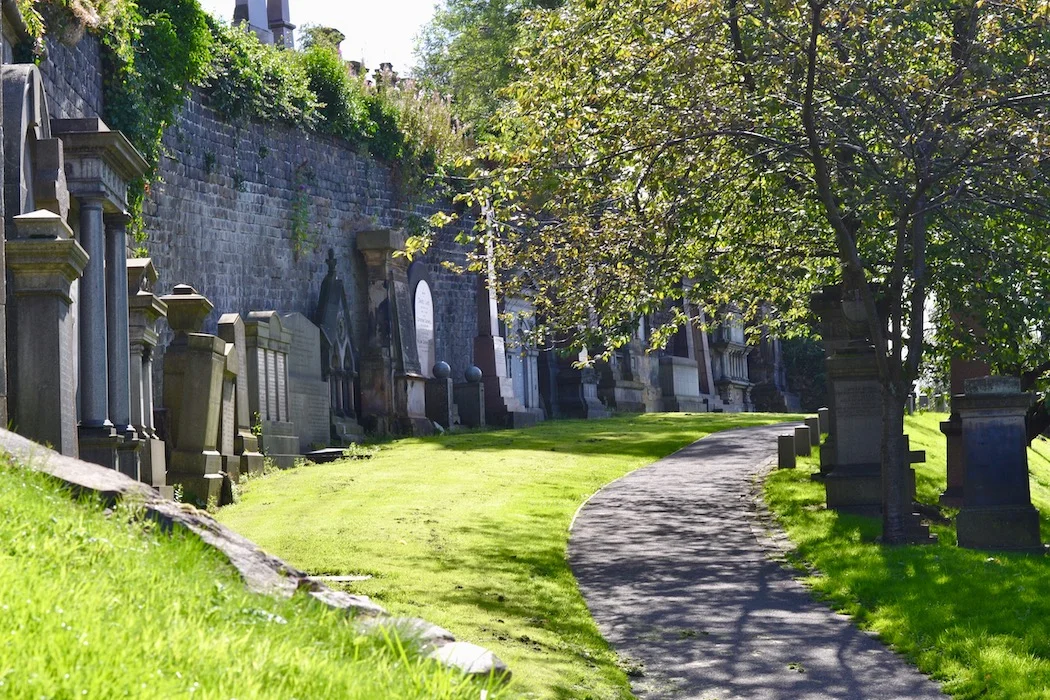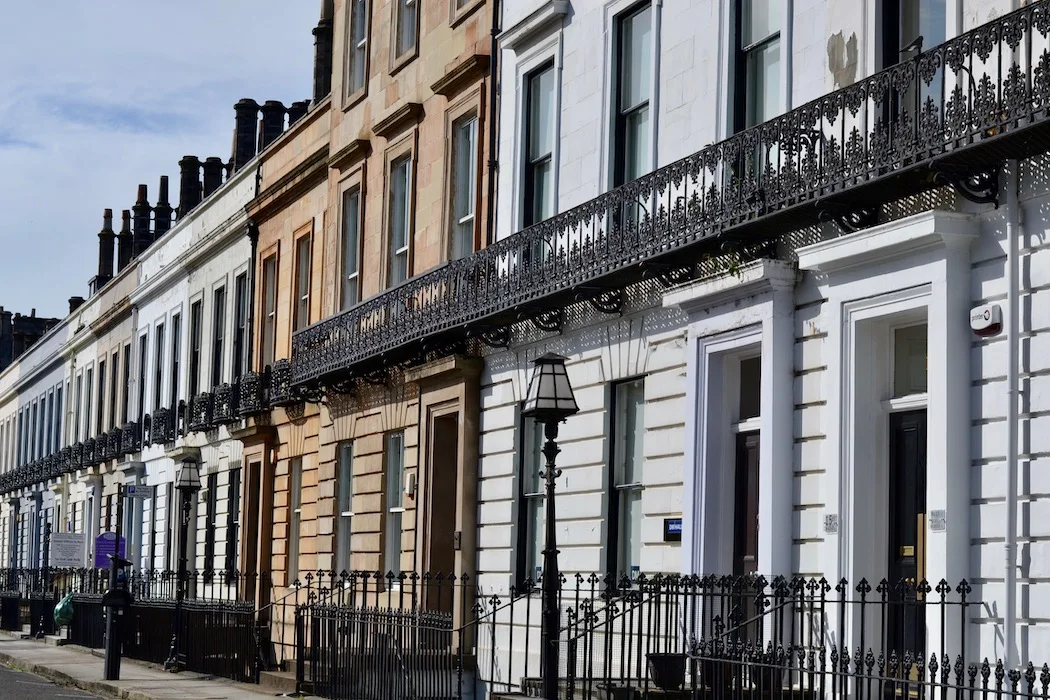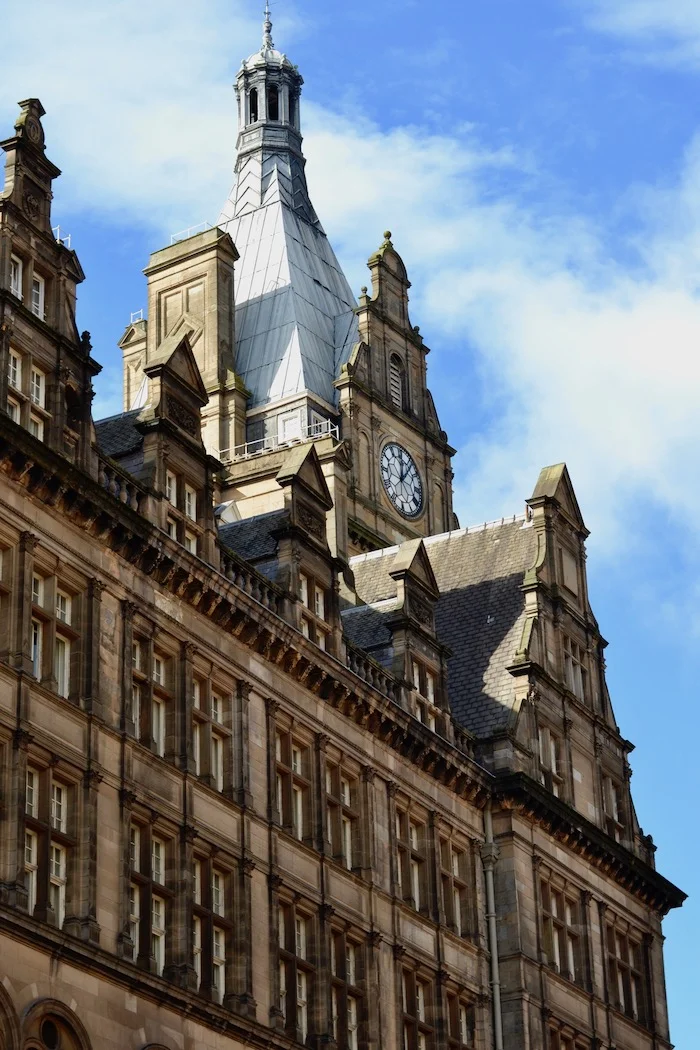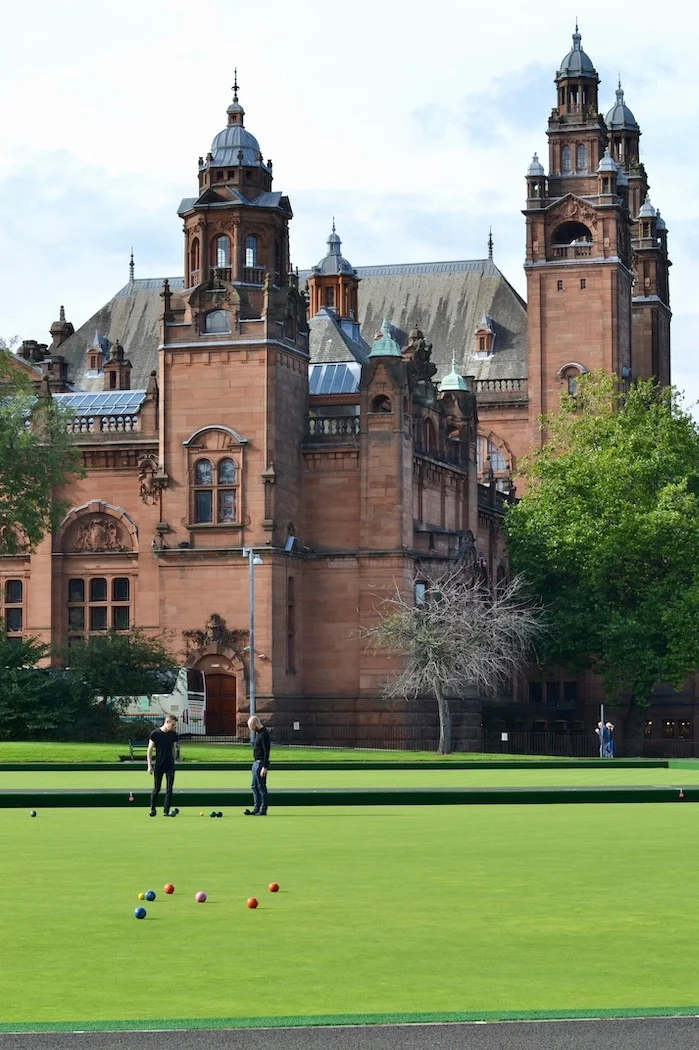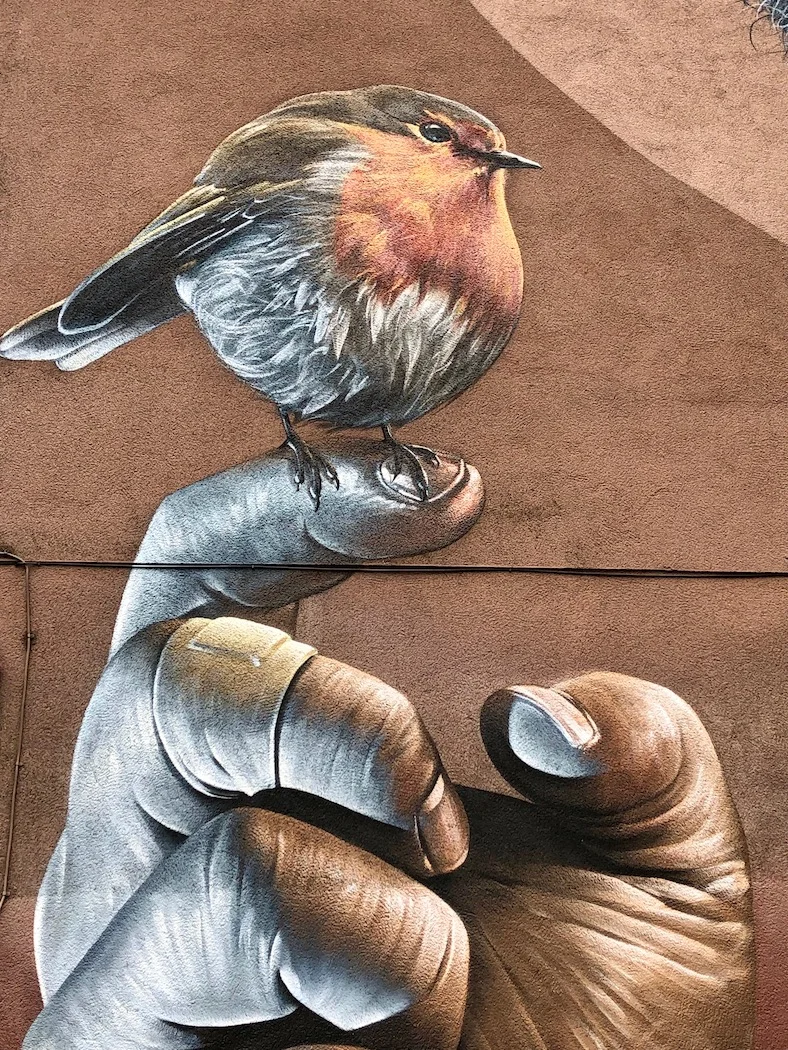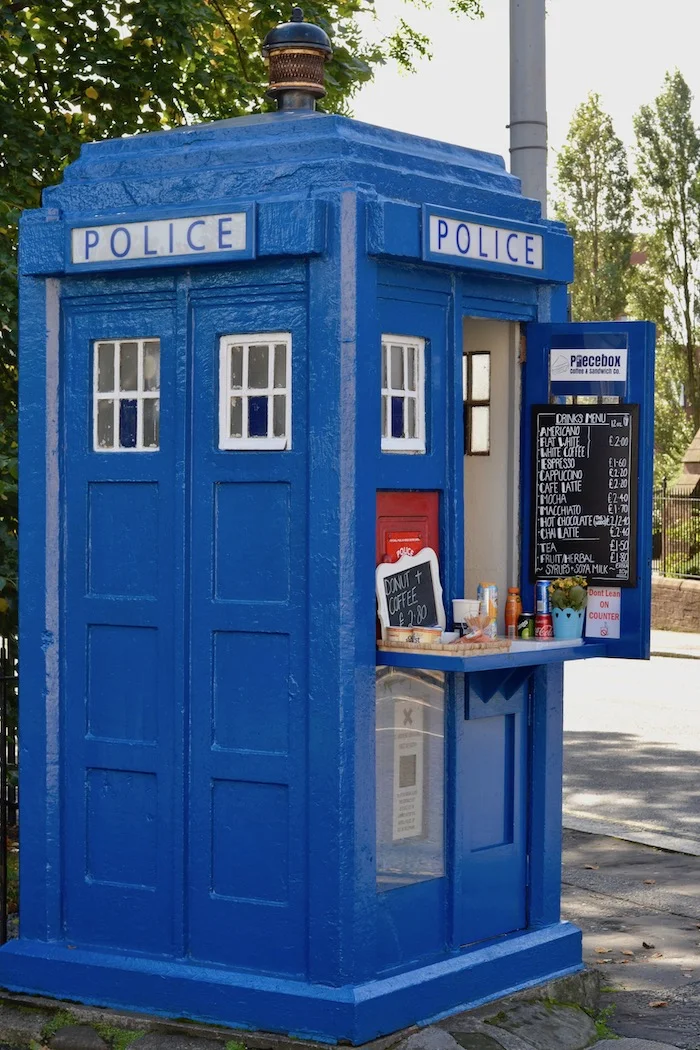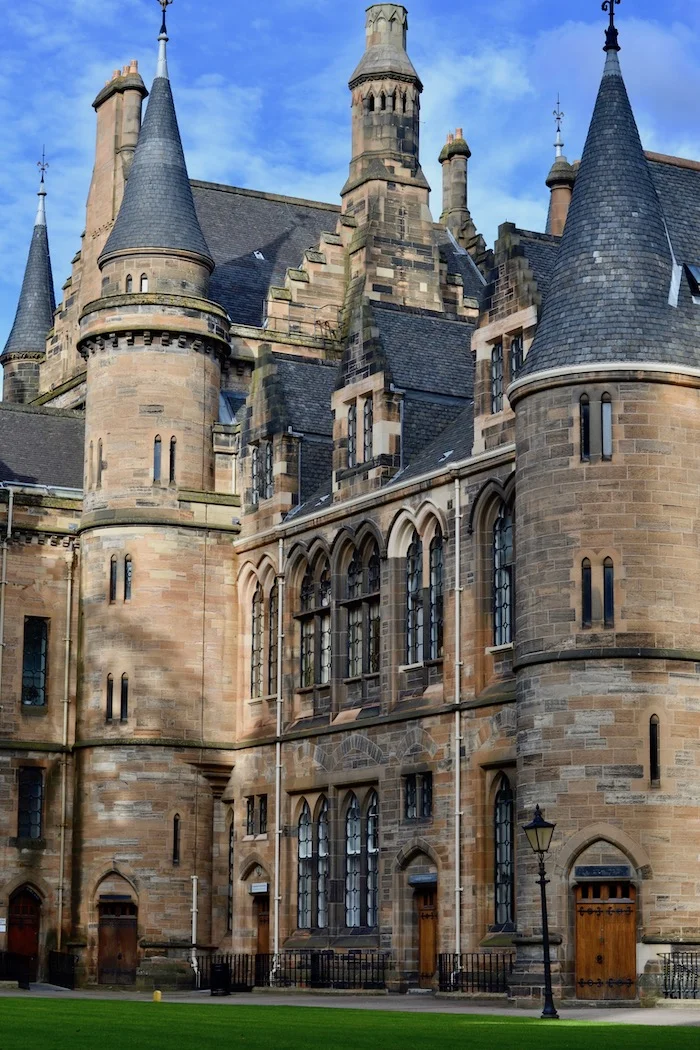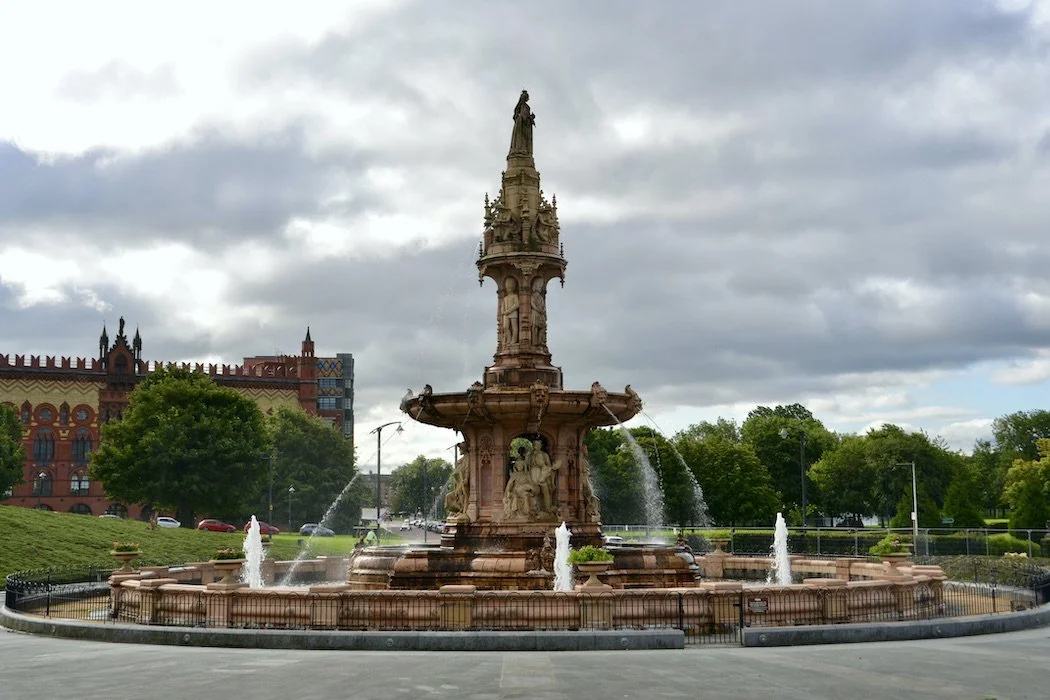Glasgow- Scotland's Second City
View over Glasgow from The Lighthouse in typical weather
“Europe’s second cities… come in first.” ― Rick Steves
Most travelers to Scotland spend time in the grand capital city of Edinburgh and then explore the Highlands, maybe stopping to taste some single malt scotch or play a round of golf. Far fewer visit Glasgow, once the British Empire’s Second City, and now arguably Scotland´s, though its population once again exceeds that of the capital.
The port city on the River Clyde, 20 miles from Scotland’s west coast on the Atlantic Ocean, is said to have been founded by the Christian missionary Saint Kentigern, also known as Mungo, in 540. He built a church on high ground near a small stream, or burn, which gradually grew into a religious center. The medieval Glasgow Cathedral now stands on the spot. Across a small bridge, and high up on a grassy hill, the Victorian era, park-like Necropolis dominates even the cathedral. The city’s name origins are older even than Mungo, deriving from Cumbric, a northern Celtic language, and meaning green valley.
Glasgow grew prosperous during the British colonial era through trade, exporting coal and plaid wool cloth to Europe, and, in turn, importing tobacco, sugar, and rum from the West Indies. The River Clyde was dredged to allow navigation to the city center and subsequently, shipbuilding and eventually heavy engineering also boomed. But the city suffered a long industrial decline and impoverishment after both World Wars, earning it a hard-to-shake reputation for being working-class, bleak, and rather dangerous.
For the last 25 years, the city has been defying its rust-belt reputation by remaking itself into a cultural hub for the arts, including ballet, opera, and theater as well as nurturing a vibrant and varied music scene. Architecturally, the city boasts Victorian and Edwardian architecture, a legacy from its industrial past and the wealth it brought. Most notable is the City Chambers on George Square though there is a multitude of beautiful official buildings and stately houses throughout the city. Favorite son, architect, artist, and designer Charles Rennie Mackintosh has also left an Art Nouveau imprint in Glasgow through his design commissions for both commercial buildings and private homes. Formerly headquarters for the Glasgow Herald newspaper and now Scotland’s Center for Design and Architecture, “The Lighthouse”, was Mackintoshes’ first public commission and it is well worth a visit. The center showcases his Art Nouveau designs and visitors can climb the beautiful circular staircase to the platform for a view over the city.
Students from several colleges and universities dominate the bohemian West End near Glasgow University. This is where acclaimed museums are located, including the captivating Kelvingrove Museum in a beautiful building. Nearby Kelvingrove Park has delightful fountains, shaded benches, children’s playgrounds, and even lawn tennis and lawn bowling facilities. The student presence here contributes to the young and vibrant, up-and-coming feeling the city gives off. In the center, a mural trail shows off the abilities of amazing street artists. A short stroll away, in the East End, lies the city’s oldest park, Glasgow Green on the banks of the Clyde. Residents come here for relaxation, recreation, and summer music festivals, or they visit the lively nearby Barras market on the weekend.
Don’t miss:
The staircase up and the view from “The Lighthouse” by Charles Rennie Mackintosh.
Serendipity:
Finding the unexpected- walking out of a park towards a museum and coming upon lively groups competing on lawn bowling greens.
Finding the unexpected- Wandering through the sprawling hotel and finding an old-world champagne bar overlooking the station’s departure hall.
Lunch Tip:
Willow Tea Room on Buchanan Street for afternoon tea with atmosphere, which can also be lunch.
Bedtime:
The Grand Central Hotel, adjacent to the train station, an iconic landmark with a couple of excellent restaurants.
Subscribe for inspiration to have my posts drop directly into your inbox. *If you enjoyed what you read, please share this post with like-minded travelers.*
*All photographs are mine, taken with my Nikon D3100 or iPhone 8.*


